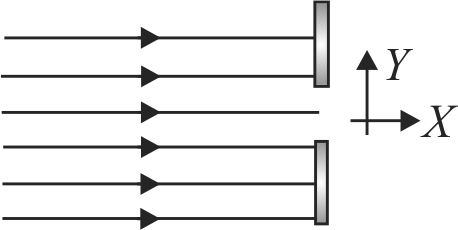357893
A parallel beam of electrons travelling in \(x\) direction falls on a slit of width \(d\) (see figure). If after passing the slit, an electron acquires momentum \(p_{y}\) in the \(y\)-direction then for a majority of electrons passing through the slit (\(h\) is Planck's constant) :
357893
A parallel beam of electrons travelling in \(x\) direction falls on a slit of width \(d\) (see figure). If after passing the slit, an electron acquires momentum \(p_{y}\) in the \(y\)-direction then for a majority of electrons passing through the slit (\(h\) is Planck's constant) :
357893
A parallel beam of electrons travelling in \(x\) direction falls on a slit of width \(d\) (see figure). If after passing the slit, an electron acquires momentum \(p_{y}\) in the \(y\)-direction then for a majority of electrons passing through the slit (\(h\) is Planck's constant) :
357893
A parallel beam of electrons travelling in \(x\) direction falls on a slit of width \(d\) (see figure). If after passing the slit, an electron acquires momentum \(p_{y}\) in the \(y\)-direction then for a majority of electrons passing through the slit (\(h\) is Planck's constant) :